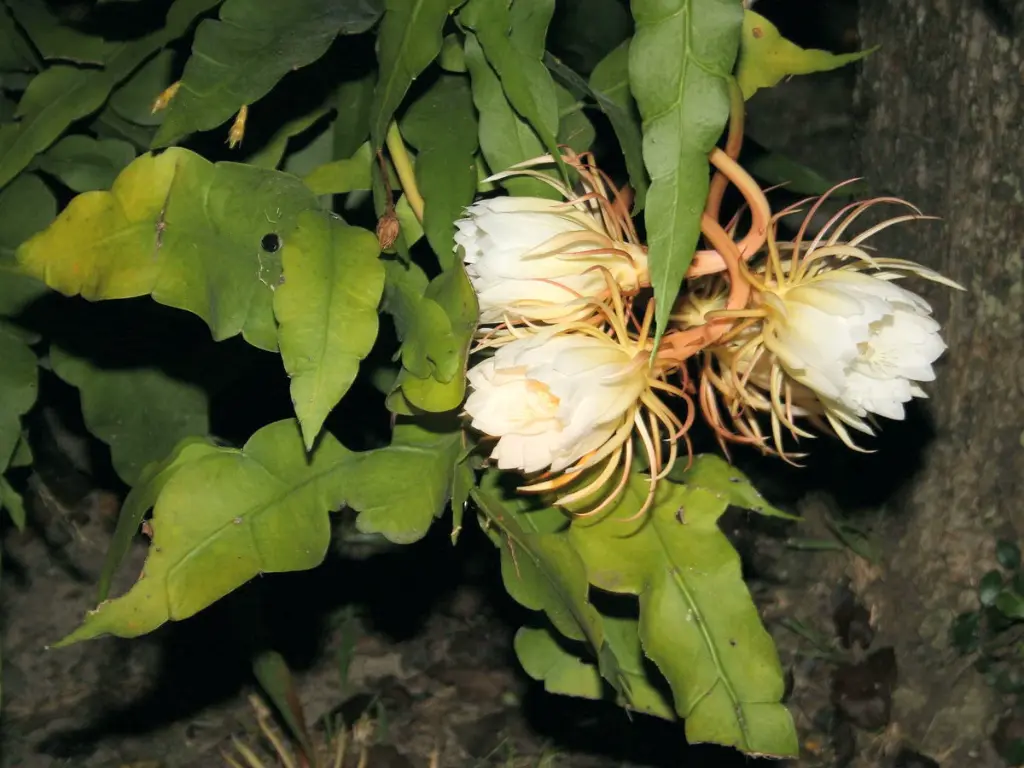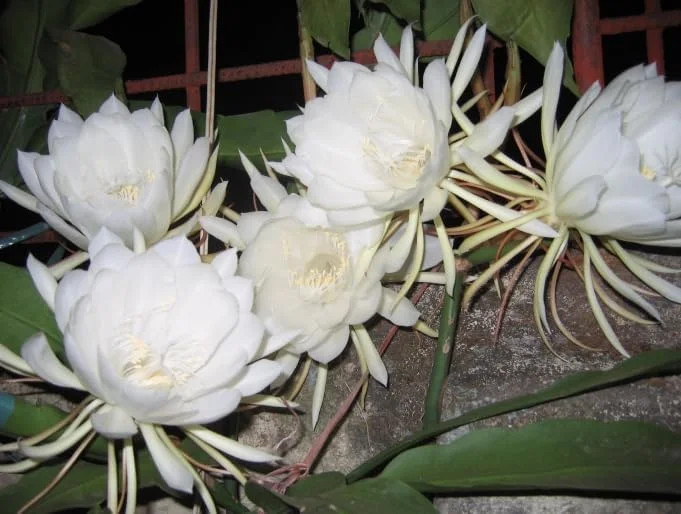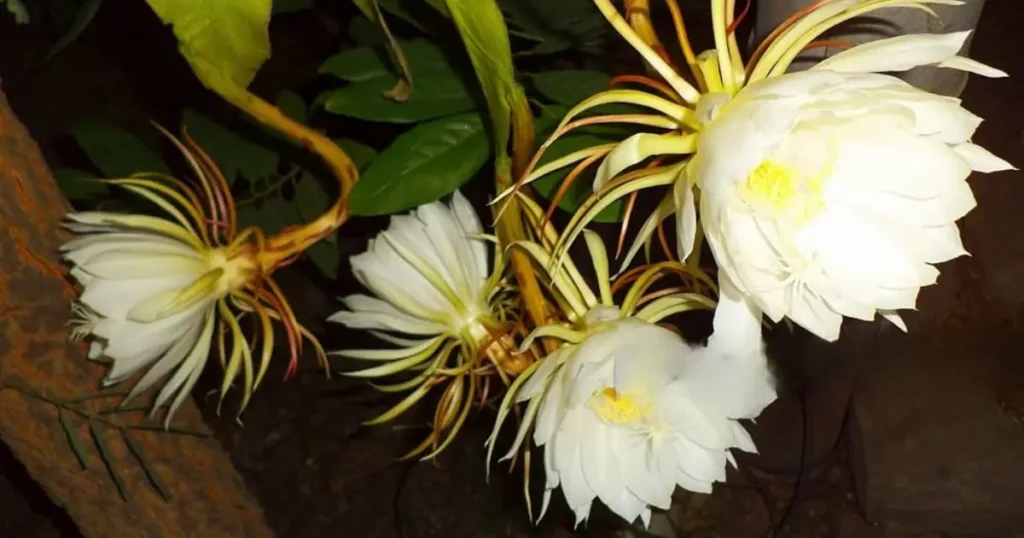Guides
When and How Queen of the Night Cactus Blooms: A Night You’ll Never Forget
If you’ve ever wondered when and how the Queen of the Night cactus (Epiphyllum oxypetalum) blooms, you’re not alone. This fascinating plant is renowned for its stunning, nocturnal flowers that bloom for just one night each year, leaving you in awe of nature’s incredible beauty. Whether you’re a seasoned gardener or a beginner, understanding the blooming habits of this unique cactus can make all the difference in your gardening experience. In this guide, we’ll dive deep into the when, how, and why of the Queen of the Night cactus bloom, and how you can care for it to ensure you don’t miss this once-in-a-lifetime event.
What Makes the Queen of the Night Cactus So Special?
The Queen of the Night cactus is a night-blooming species of cactus, often referred to as “night-blooming cereus” or “Epiphyllum oxypetalum.” Native to tropical climates in Central and South America, this cactus thrives in warm, humid environments. But what truly sets it apart is its striking flowers, which bloom only at night. The bloom is short-lived, lasting only a few hours, making it a rare and highly anticipated event for plant lovers.
In this article, we’ll answer common questions, share tips on how to care for your cactus, and ensure you can enjoy the beauty of this breathtaking bloom.
When Does the Queen of the Night Cactus Bloom?

One of the most common questions plant enthusiasts have is: When does the Queen of the Night cactus bloom?
The Queen of the Night cactus typically blooms in late spring to mid-summer, depending on where you live and how well the plant is cared for. The bloom time often falls between June and July, with the flowers opening in the late evening hours, usually around sunset.
The flower itself is white and incredibly fragrant, attracting moths and other nocturnal pollinators. The blooming period is brief, only lasting a few hours. By dawn, the flower wilts and closes, leaving behind a memory of one of nature’s most beautiful spectacles.
Why Does It Bloom Only at Night?
You might wonder why the Queen of the Night cactus blooms only at night. The answer lies in nature’s delicate balance between plants and pollinators. The plant’s flowers are specifically adapted to attract nocturnal creatures, such as moths and bats, which are drawn to the strong scent the flowers emit during the night.
Additionally, blooming at night offers the flower protection from the harsh daytime sun. This strategy helps conserve energy and prevents the delicate petals from wilting too quickly under direct sunlight. Nighttime blooming also reduces competition with other daytime flowering plants, giving the Queen of the Night cactus a unique advantage in attracting pollinators.
How to Care for Your Queen of the Night Cactus

Proper care is essential for ensuring that your Queen of the Night cactus thrives and blooms beautifully. Let’s take a look at the key factors that contribute to a healthy, blooming cactus:
1. Light Conditions
While the Queen of the Night cactus prefers indirect sunlight, it still requires adequate light to flourish. Position the plant in a spot where it receives bright, but not direct, sunlight. Too much sun can lead to sunburn on the cactus, while too little light can hinder blooming.
2. Temperature
The ideal temperature for this cactus ranges from 65°F to 75°F (18°C to 24°C). While it can tolerate short periods of cooler temperatures, the plant should be protected from frost, as it thrives in tropical and subtropical climates. During the winter months, it’s essential to bring the cactus indoors if you live in a colder region.
3. Watering and Humidity
Watering is a crucial part of caring for your Queen of the Night cactus. Like most succulents, it’s best to water it sparingly. Water the plant thoroughly when the soil is dry to the touch, but avoid letting it sit in water. The roots are particularly susceptible to rot if overwatered. During the growing season (spring and summer), water once every 7-10 days. In fall and winter, reduce watering to once every 2-3 weeks.
This cactus also enjoys a bit of humidity, so placing it in a humid environment or occasionally misting it can encourage healthy growth.
Read more: Queen of the Night Cactus Care: Secrets to Blooming Success!
How to Encourage Blooming
Now that you know how to care for your Queen of the Night cactus, let’s talk about how to encourage it to bloom. After all, who doesn’t want to witness this stunning event?
1. Provide Adequate Darkness
One of the most important factors for encouraging blooms is ensuring that the plant experiences 12 hours of uninterrupted darkness each night. The cactus requires this dark period to stimulate its blooming process. If possible, keep it in a room where the lights can be turned off at night to mimic its natural environment.
2. Temperature Regulation
During the blooming period, it’s beneficial to reduce the nighttime temperature slightly to mimic the natural conditions where this cactus blooms. A drop in temperature to around 50°F (10°C) can help trigger the blooming process. However, be sure not to let it get too cold, as temperatures below freezing can harm the plant.
3. Fertilize Lightly
Fertilizing your cactus during the growing season can help promote healthy growth. Use a balanced, water-soluble fertilizer, but avoid over-fertilizing, as this can result in weak growth. A light feed once a month should suffice.
Common Issues and Troubleshooting
While caring for the Queen of the Night cactus is relatively easy, there are a few common issues that gardeners face. Here’s how to troubleshoot them:
1. Lack of Blooms
If your cactus isn’t blooming, there could be several reasons:
-
Not enough light: Ensure the plant is receiving enough indirect sunlight.
-
Inconsistent light/dark cycles: If the cactus isn’t getting the required 12 hours of darkness each night, it may not bloom.
-
Incorrect temperature: A temperature fluctuation may prevent the cactus from blooming.
2. Yellowing or Wilting Leaves
Yellowing or wilting leaves can indicate overwatering or too much direct sunlight. Be sure to adjust watering habits and move the cactus to a location with indirect sunlight.
Conclusion
The Queen of the Night cactus offers a spectacular, fleeting moment that’s worth every bit of effort you put into caring for it. By understanding its blooming schedule, providing the right care, and giving it the perfect environment, you’ll be able to witness one of nature’s most beautiful displays.
If you’ve been looking for a unique plant to add to your collection, or if you’re hoping to catch that elusive bloom, the Queen of the Night cactus is sure to leave you in awe. So, start preparing for the big night, your cactus could be blooming sooner than you think!
Frequently Asked Questions (FAQs)
-
When does the Queen of the Night cactus bloom?
It typically blooms between June and July, with the flowers opening in the evening and wilting by morning.
-
Why does it bloom only at night?
The plant blooms at night to attract nocturnal pollinators like moths and bats. The flower’s fragrance is strongest at night.
-
How can I encourage my cactus to bloom?
Ensure the cactus receives 12 hours of darkness each night, and reduce nighttime temperatures slightly to trigger blooming.
-
What should I do if my cactus isn’t blooming?
Check for proper light, temperature, and watering conditions. Ensure the plant is getting enough darkness during the blooming season.


7 Vegetables to Plant in December for a Bountiful Winter Harvest
Winter gardening is a challenge many new gardeners shy away from. But if you’re among [...]
Dec
9 Common Christmas Cactus Problems and How to Fix Them
Have you ever walked past your Christmas cactus and wondered why it suddenly looks sad? [...]
Nov
Swedish Ivy Care: How to Grow a Healthy, Thriving Plant
Have you ever looked at your Swedish Ivy and wondered why the leaves are turning [...]
Nov
Avoid These 10 Garlic Planting Mistakes for Bigger, Healthier Bulbs
Growing garlic at home is one of the most satisfying things a gardener can do [...]
Nov
How to Prevent Christmas Cactus Bud Drop: Tips for a Healthy Bloom
Have you ever noticed your beautiful Christmas cactus (Schlumbergera) starting to lose its buds just [...]
Nov
Discover 7 Stunning Types of Night-Blooming Cereus
Have you ever waited for a flower that only opens at night and then disappears [...]
Nov